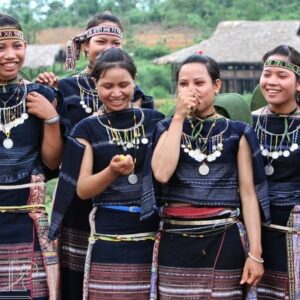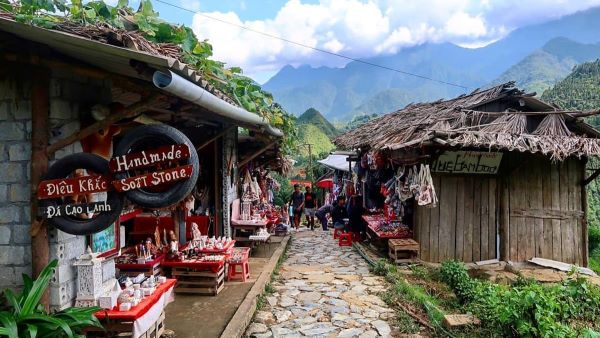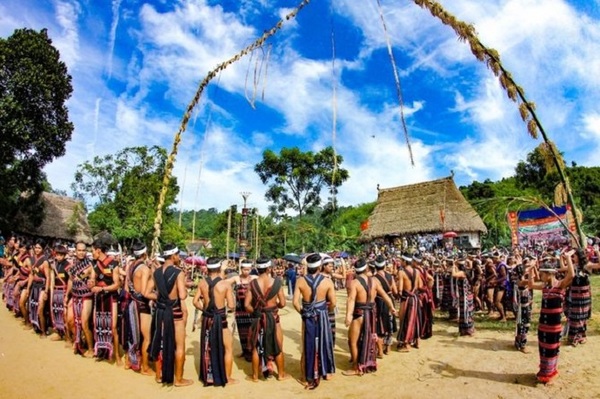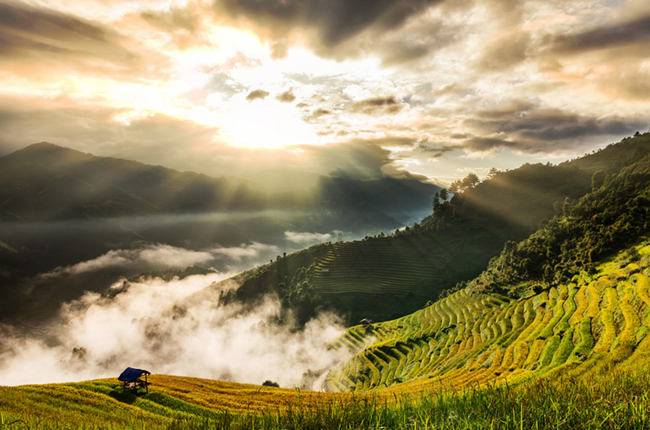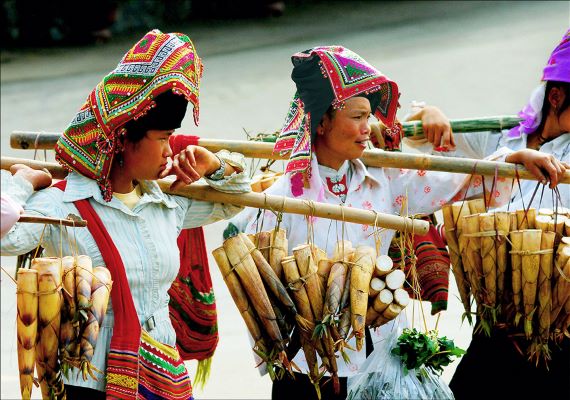General information of Bahnar Ethnic Group
Also known as Bo Nam, Koh, Kon Kde, Ala Kong, and Kpang Kong, the Bahnar people have their own language, which belongs to the Mon Khmer language family of South Asia. Their residences are spread across Gia Lai, Kon Tum, and the western areas of Binh Dinh, Phu Yen, and Khanh Hoa provinces.
The ancestors of the Bahnar people originally settled around Mang Yang Mountain and the Ba River. Over time, due to migrations, they gradually moved westward to Ayun, Dak Bla river basins, and Kon Tum. Their history is closely intertwined with the Central Highland’s ethnic groups, and they are often referred to as “people in the mountains.”
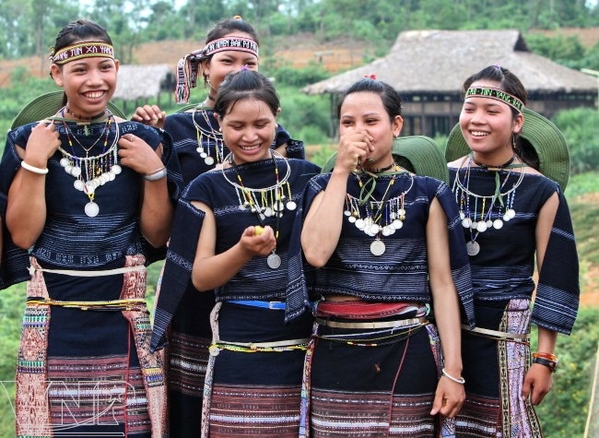
Bahnar people
The Bahnar people’s residence area spans across Gia Lai, Kon Tum, and western areas of Binh Dinh, Phu Yen, and Khanh Hoa provinces. According to the census data of 2019, their total population reached 286,910, with the majority living in rural areas. Their language, Bahnar, is part of the Mon Khmer language family of South Asia.
History
The Bahnar people’s history is fascinating and deeply connected to the Central Highlands’ ethnic groups. Their ancestors originally settled near Mang Yang Mountain and along the Ba River, moving towards the mountainous districts of Binh Dinh Province over time. Their courtesy name, “Bahnar,” translates to “people in the mountains,” but they are known by various other names, including Bo Nam, Roh, Kon Kde, Ala Kong, and Kpang Kong.
Main Features of Bahnar Ethnic Group
Costume
The Bahnar people’s traditional attire reflects their unique culture. On regular days, Bahnar men can be seen wearing loincloths, often leaving their upper body exposed. However, on special occasions and festivals, they adorn themselves with shirts and scarves. Women typically wear skirts, tops, and scarves on their heads, showcasing their vibrant and distinctive clothing traditions.
Housing
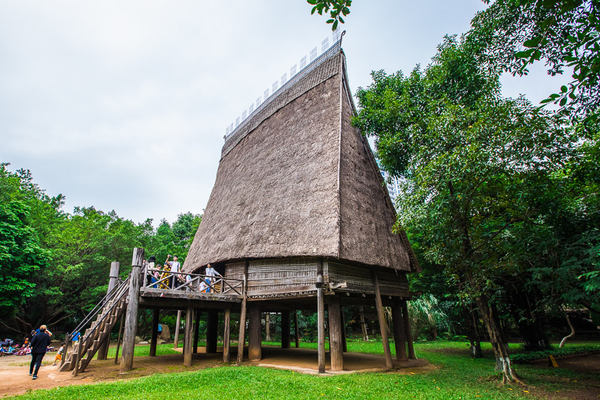
Traditional house of Bahnar ethnic group
Bahnar people live in houses built on stilts, using bamboo and leaves. In the past, large families resided in houses with numerous compartments. However, contemporary Bahnar houses usually consist of 3 to 5 compartments, accommodating smaller, multi-generational families. Notably, communal houses (nha rong) are a prominent feature of Bahnar villages, serving as the epicenter for communal cultural activities.
Traditional Activities
Marriage
The Bahnar people follow monogamous marriage customs and practice alternate residence. Additionally, they adhere to the principle of marrying within the same ethnic group and avoid intermarriage within the same clan. After completing the cycles of alternate residence, newlyweds typically move out to establish their own separate households.
Festivals
Traditionally, the Bahnar people celebrated their Lunar New Year Festival (Tet) after the harvest. However, in recent times, they have adapted to the calendar of the Kinh (Vietnamese) people for celebrating Tet. This cultural shift demonstrates the Bahnar’s ability to integrate their traditions with the broader Vietnamese society.
The Bahnar Ethnic Group’s rich history, unique language, and cultural practices make them a remarkable part of the Central Highlands in Vietnam. From their traditional clothing to their distinct stilt houses and customs, the Bahnar people offer a glimpse into a world that’s both culturally diverse and fascinating. It is essential to acknowledge and preserve the heritage of such ethnic groups to celebrate the diversity of our world.

